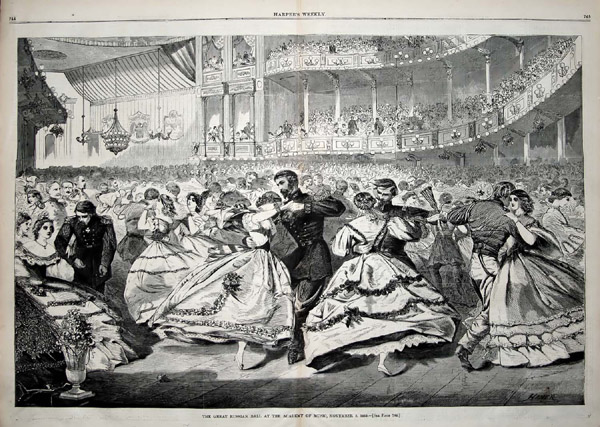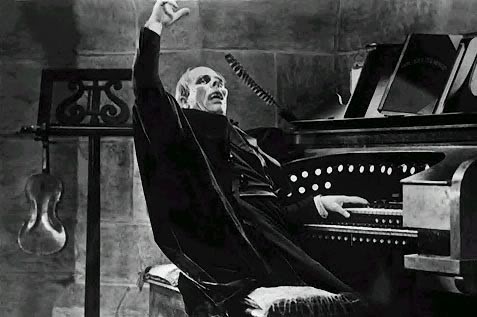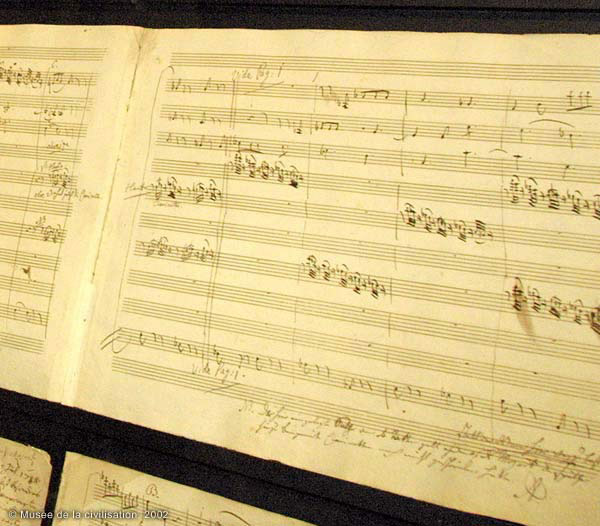Three Pieces for Violin and Piano
early June--August 23, 2014 Duration: about 22 minutes
Full Score,
PDF Cover
(all three pieces have orchestral versions linked below)
There are three versions of the violin part. One is legal-size,
which is convenient for page turns on paper. The next is letter-size,
and the third is for electronic music readers, with the violin part
large and including reduced piano staves.
Violin Part, Legal Violin Part, Letter Violin Part, E-Reader
Recordings
and
videos below are from the premiere performance by
Eric Pritchard and Greg McCallum at Duke University,
January 11, 2015. (Program)
Audio in both videos and mp3 recorded by Rick Nelson at Duke;
sound track added to videos by VoChor.
The
first piece in this collection was the last to be written. I like waltzes and
have written several over the years.
Waltz For Our Time
(August 6--23, 2014)
Moderato [7:20]
video (YouTube) MP3 recording WAV recording (CD quality)
. Orchestral Version
________________________________________________
Diatonic Phrygian Tetrachord 
(July 20--Aug. 6, 2014)
Adagio andalusia
[7:50]
video (YouTube)
MP3 recording WAV recording
The
second piece was inspired by the radio. On
July 6, 2014, WNYC broadcast “The World’s Most-Used Musical Sequence”, which
was an hour-long compilation of musical excerpts demonstrating the use of the
Diatonic Phrygian Tetrachord. NPR followed up with five minutes on Weekend Edition on July 20. Despite the
forbidding academic name, this series of four notes, with many modifications,
has been used for centuries by musicians all over the world.
The
basic sequence is four descending notes with the pattern whole step, whole
step, half step. On a piano keyboard, one example would be the four white notes
going down starting from E. This composition uses the Diatonic Phrygian
Tetrachord both unmodified and highly modified in pretty much every way I could
think of, frequently with several modifications simultaneously, in a reasonably
contemporary idiom. I will leave it to musicologists yet unborn to deal with
the analytical details, as I have some pride in not having opened a music
theory book since 1975, and I don’t want to have to look things up.
Orchestral Version
________________________________________________
Mozart's Twelve-Tone Row 
(June-July
2014)
Allegro assai: Half Fast: Tempo I:
Moderato: Tempo I [6:14]
video (YouTube) MP3 recording WAV recording
The
finale (the first to be written) is a modern take on the most dissonant music
written by Mozart; the final half of the final movement of his 40th
Symphony. This section starts with what is very nearly a twelve-tone row. What
I have done here, as I have done several times in the past, is to see what I
would do with the key ideas of this piece written in my own style and form.
This is by no means an arrangement of the original, but instead is an entirely
new work. (Never fear—as I have never written in the twelve-tone style, which I
find obnoxious in the extreme, I have not done so here either.)
Orchestral Version
________________________________________________
Over
the last decade I have preferred to write pieces from about 15 to 25 minutes
long; this is most suited to the kind of music that I write. In our fast-paced era
of minute attention spans, what people want is music of much shorter duration. Almost
all composition contests are for very short pieces. I have frequently urged performers to consider playing single
movements, but this happens infrequently. As a result I decided to write some
short pieces for violin and piano that could be played together for the same
effect as a single piece, but which would each stand alone.
All
three pieces have orchestral versions.
These
three pieces were first performed at Duke University on January 11, 2015, by
Eric Pritchard, violin, and Greg McCallum, piano.
Accidentals
hold through the measure and not beyond, and do not refer to other octaves.
Eric Pritchard edited the violin parts.
Musician Biographies
Pianist
Greg McCallum performed across
North and South America, the Caribbean, Europe, and Asia in some of the world’s
most prestigious concert halls. He won many honors in piano competitions,
and frequently appeared on radio and television. His recordings have been
featured in Gramophone, Fanfare, and Clavier magazines.
A
dedicated teacher, McCallum maintained a private studio of advanced students who
have won honors in regional and international piano competitions. In both his
performing and teaching, McCallum was greatly influenced by the
Feldenkrais Method of somatic education. Greg McCallum died in 2016.
Eric Pritchard,
violinist, has been a
member of Ciompi Quartet since 1995 and was formerly the first violinist of the
Alexander and Oxford Quartets. Mr. Pritchard has taught at Miami University,
San Francisco State University, City University of New York and the North
Carolina School of the Arts. He was winner of the National Federation of Music
Clubs Award in Violin as well as the first-prize winner at the Portsmouth
(England) International String Quartet Competition and the Coleman and Fischoff
national chamber music competitions. He has performed widely as a recitalist
and as soloist with the Boston Pops and orchestras in Europe and South America.
His major teachers were Eric Rosenblith, Josef Gingold, Ivan Galamian and
Isadore Tinkleman and he holds degrees from Indiana University and the
Juilliard School. He has performed many works by Bill Robinson since 2006.






